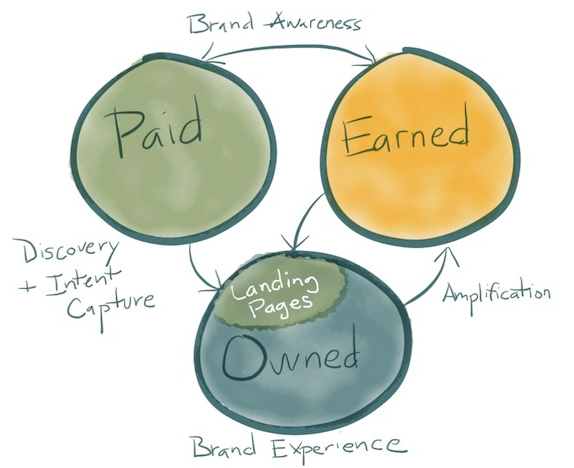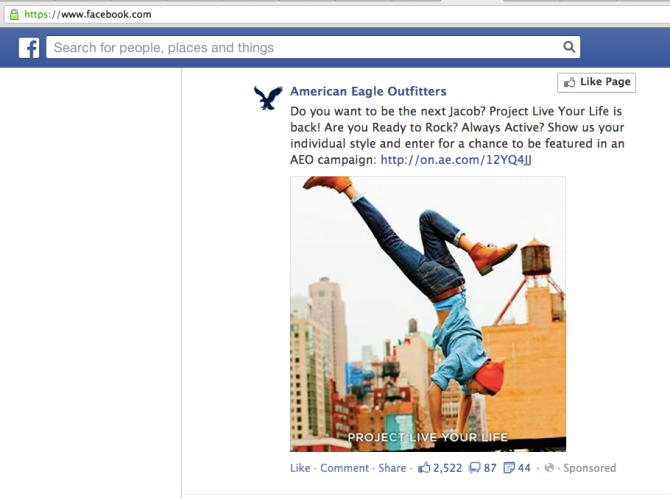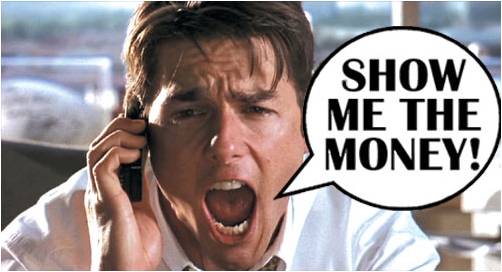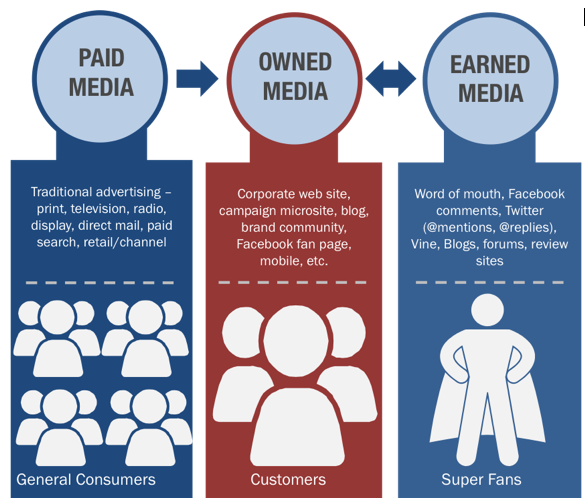A fundamental objective of marketing is to deliver a message. Like in all forms of communication, marketing delivers messages through channels. Unlike other forms of communication, marketing communications can utilize and deliver messages through a ton of different channels. To make things simple, marketers categorize these media channels into three different types: paid, earned and owned.
Paid media, intuitively enough, are media channels which a company pays for. Paid media channels such as banner ads and paid search are in high demand and frequently used by businesses because they are highly targeted and are good resources to channel potential customers to other earned and owned media sources.
Owned media are media channels that a brand has usually built for themselves (websites, blogs) or control themselves but did not build from the ground up (Facebook pages, Twitter accounts, this WordPress blog). Owned media channels are great for engaging and building lasting relationships with potential customers. They are cheap, customizable, versatile and are great for building and maintaing brand image. On the downside, owned media channels can often be time-consuming to manage and hard to scale.
Earned media takes the channel control out of the hands of the business and places it in the hands of the customer. Earned media such as viral videos, word-of-mouth, newspaper articles and customer reviews are created by other people or entities separate from the business being promoted. The best part is that businesses do not need to pay for earned media and typically, earned media is the most credible and long-lasting. However, since the business does not control the content of earned media, the content itself can contradict the business’s brand image or marketing objectives and can even be negative, such a customer complaints and bad reviews.

A flowchart of media types, courtesy of JG Sullivan Interactive, Inc. Although they differ, paid , earned and owned media channels should all work together to deliver a consistent message.
The world of marketing is in a constant state of change. The media channels utilized by marketing communication efforts change with it. Of the three media types, I think that paid media will see the greatest changes in the near future as customers demand more interactive and engaging content.
Paid media such as banner ads and pay-per-click search sources such as Google AdWords are seeing declining response rates from customers. Why is this? Customers are easily able to distinguish between advertisements and engaging content and they are far more averse to obvious ads such as banner and PPC ads than they are to the promotional material contained within rich owned content such as blogs and social media sites.
What options does the future hold for paid media? I believe that two things will happen. First of all, paid media channels will become more “native” in their structure and appearance. Native ads match the form and function of the interface and user experience within the medium they are delivered on. This is already happening all across the web. For example, Facebook offers “Sponsored Story” ads, which show up in a user’s Newsfeed resembling a status a update but containing promotional material which the advertising company has paid handsomely for. These native ads do a much better job at delivering marketing materials because they are designed to look and feel natural in the context of what the user is currently doing on the site or platform instead of traditional paid media channels which often look out of place and disjointed from the rest of the content.

This native Facebook ad for apparel company, American Eagle, blends in seamlessly with the Facebook user interface to deliver a promotion that feels natural and relevant to the context of Facebook.
Secondly, paid media as a whole will become less popular with businesses as more and more companies continue to adopt and focus their efforts on earned and owned media, which do a far better job at engaging the customer and building relationships that last. Steve Kerho, in “Paid Earned and Owned: A Content Paradigm Whose Time Has Past,” writes that “at the end of the day, consumers believe that they are the brand as much as the marketer.” This concept helps explain why earned and owner media, which Kerho believes should be grouped together as “shared media,” is increasingly popular today. Consumers want to have a meaningful relationship with a brand and feel as though they are able to directly contribute to the future of the brand. Shared media channels, like blogs and user-generated content, provide consumers with the ability to interact with a brand in ways that paid media channels, even native ads, cannot. While companies can come up with a brand image they wish to communicate, it is ultimately the consumers who dictate brand image and shared media channels allow the consumers to do so in interactive and engaging ways.
User-generated content (UGC) is one of the best forms of shared media that allows customers to directly contribute to a brand’s identity. Here are “5 Powerful Examples of User Generated Content” by the Content Marketing Institute – including the Ford Fiesta Movement and The Guardian’s “Own the Weekend.”


Hey Nick, Great overview! Having worked in the ad industry for a long time (longer than I care to admit sometimes) I think that you’ve summed up current industry trends very well and your observations and projections are interesting. Keep writing.
Thanks Kristy! I appreciate the feedback and I’m happy you think I did a decent job covering the subject.